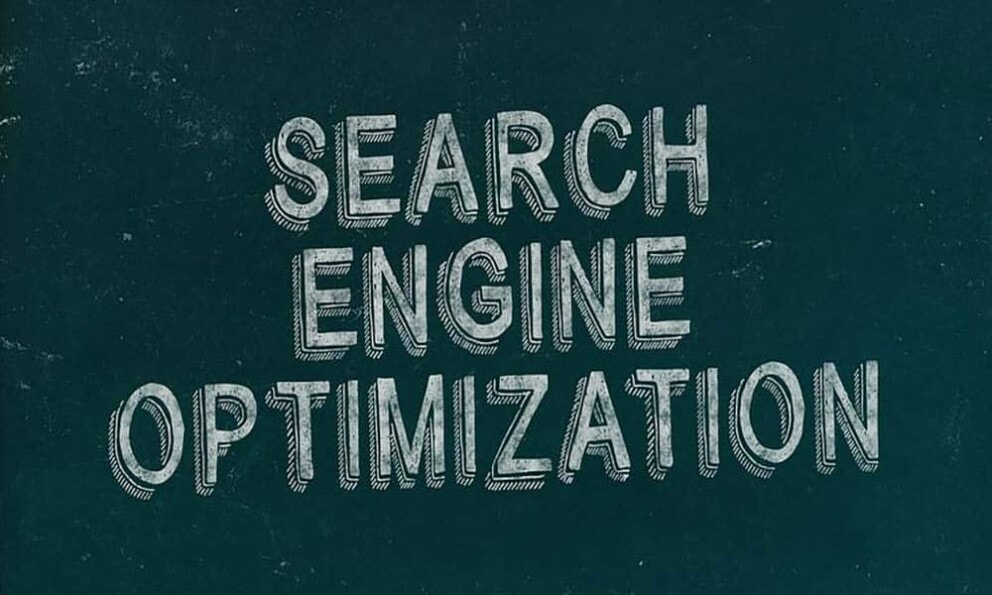Why are search rankings so important?
“Launching a website without considering search engine optimisation is like throwing a party and forgetting to invite any people”
Jan Blythe – Avoca’s content lead
These days there are so many ways you can reach your customers and clients online:
- social media
- building an email newsletter list and sending regular newsletters
- paid advertising platforms (Facebook and Google Adwords)
- referral traffic from other websites that link to yours
- turning up in search results in a search engine such as Google, Bing or DuckDuckGo.
So why should you focus on SEO?
For many types of businesses, search engine traffic remains one of the most highly converting and regular sources of traffic, even with the rise of other newer platforms and media.
Search engine traffic is also very action focused, people are “googling” to solve a problem or discover the answer. They are in the mood for information or ready to make a purchase. If you can give them what they want; the answer or a relevant service, chances are much higher that they will turn into a customer.
Because it is so valuable, everyone wants to rank #1, for every important keyword. The trouble is, everyone else is trying to rank highly as well. This results in an SEO landscape that is very competitive.
Good search engine ranking results come from a well thought out, long term SEO strategy. Short term or one off optimisation efforts will quite often fail to deliver the rewards you want.
We’re going to walk you through the basic process of understanding and improving your websites SEO.
If you’d rather have some professional help to get the results you’re looking for then talk to us about building out your SEO strategy.
Step 1: What exactly is SEO?
A little understanding of SEO goes a long way
Simply put, search engine optimisation (SEO) is the process of tweaking your website content with the goal of helping search engines understand your website better. Search engines like Google will then use your website content to answer their users search queries. This drives new visitors to your website.
The best place to start with search engine optimisation is to gain a little understanding. It can be a confusing topic, full of jargon and can feel overwhelming at first. However, if you invest a little bit of time into SEO learning, your can make better decisions about your websites content direction. Your website will be much better off in the long run for this clear forward planning.
Even if you choose to work with a good SEO professional or agency you should still understand the basics so you can contribute to the SEO efforts, make sure they are aligned with your business goals and better evaluate the success of the work undertaken.
Read the full article: What is SEO (Search Engine Optimisation)?
Search engine optimisation is often about making small modifications to parts of your website. When viewed individually, these changes might seem like incremental improvements, but when combined with other optimisations, they could have a noticeable impact on your site’s user experience and performance in organic search results.
– Google’s Search Engine Optimization Starter Guide
What does all the SEO jargon mean exactly?
Search engine optimisation specialists often use industry jargon and abbreviations that can be confusing if you are new to SEO. Getting a handle on some basic terms can really help you feel like you are on the same page.
SEM = Search Engine Marketing
SEO = Search Engine optimisation
SERP = Search engine results page. The list of results that are displayed when you search for something.
Keyword(s) = The words you type in the search engine to look for things
Search Phrase = Same as keyword
Backlinks = Links from other websites back to your site. Search engines use these as a signal that your site has valuable information on it.
Content Silos = A way of organising pages in a parent/child relationship that makes it easier for the search engines to find related content on your website
On Page optimisation = Optimisation tweaks to the content and code on your website pages
Off Page optimisation = Optimisation of content and links not on your own website
Step 2. Taking stock of your current website SEO
Once you know what search engine optimisation is all about, you need to have a good look at your website and your site’s content. Ask your self some questions:
- Is your site indexed in search engines?
- Can you find your site when you search for keywords that relate to your business
- Who else can you find? Who are your competitors?
This will give you a basic idea of where your website is at from a search engine optimisation point of view. It’s important to set a baseline before making changes. You want to improve in areas where you are weak and build on the strengths you already have.
It’s also helpful to have a look at your competitors who are displayed when you search for keyword phrases related to your business. Have a look at the style of site and what kinds of content they are using. It’s not about copying them, but it can be helpful to give you ideas about what kinds of content work and could be added to your own website.
“Help Google find the best content to solve a users problem and you’ll win at SEO”
Rebecca Gill
Step 3. SEO keyword research
Knowing what keywords to optimise for is a vital part of search engine optimisation.
The words and phrases you think of when searching might not be what your customers use. “doctor” is different than “physician” and you’ll see differences in the volume of searches for each term. You’ll also notice geographical variations in search volume for phrases across regions and countries.
A good keyword search tool is essential to give you more information about the relative search volumes for particular terms, related keyword searches and the level of competition you face from other websites. We love KW Finder. They have a good free offering that is easy to use and provides accurate results in our experience. By using a tool like KW Finder you can take some of the guess work out of the process. KW Finder will also let you export keyword lists to excel for further prioritisation and commenting.
Also pay attention to the kinds of results that are turning up when you search. Are they informational (like wikipedia) or service based (like your local plumber)? Are they returning local or international search results? It will be harder to compete with large international websites like wikipedia and you might want to diversify your keyword strategy if many of your primary keywords face heavy competition.
Keyword research tip: when Googling a keyword have a look at the bottom of the SERP’s at the “related searches”. Google is putting these here because it knows other people who searched for your keyword also used these related phrases. They can be good to add to your research list.
Step 4. A content audit
The next step is to take stock of your current content. Make a list of all of the pages on your website currently. Give them a rating, ask yourself some questions about each page:
- Is the content relevant to my target audience?
- Are the SEO keywords from the previous step included in the existing content SEO?
- Is the content logical where it is? Should it be combined with another page or pushed into it’s own page for better clarity and visitor experience?
Once you’ve gone through your existing content you’re more aware of the gaps you have and what is working well and you’re ready to start your SEO content plan.
Step 5. Make a content plan. When making a good SEO plan, content is king
Ok by now you know how your site is performing, what keywords to target and what content on your website is working well. It’s time to start making some improvements. To get the best results, before making any changes you should make a plan. Start by asking yourself
- Have you mapped the keywords you chose in step 3 either to existing pages or pages you are going to create
- Do you have a good content structure, do you have content silos?
- Do you have relevant content on your site for those keywords?
- What content could you create that would be useful to your visitors (Blogs, Videos, Podcasts etc)?
- Can you create new content that is both relevant to your audience and targeted to your selected keywords?
- Brainstorm a number of blog or article titles to help you overcome writers block
Google is getting better at understanding your page like a human would. Websites with great original content are being rewarded with better search engine rankings. This makes sense if you think about it. Better, more relevant content gets more links from other websites, more shares on social media and engages your audience more. The better the Google search bots become at understanding your content this way, the more you need to consider writing helpful website content that your visitors will want to read.
Content silos are groupings of related content e.g. types of yoga for a yoga practice or individual business service pages grouped under one master services page. Grouping your content together with a parent/child relationship like this can really help Google understand the related content on your site.
How to actually create your SEO plan
Go through the list of pages you made in the previous step and add in new pages. Excel or another spreadsheet tool is great for this. We like to keep track of the pages name, the page’s purpose and the content silo it belongs to (or parent page). We also want to know what keyword(s) we are targeting for that page so we can see that we have all the keywords mapped to appropriate content.
If you are new to SEO, try to only map one keyword per page. You’ll get better results this way. Semantically related keywords you might want to group together such as “content planning” and “content strategy”. “Web Design” and “SEO” would be targeted to different pages.
Step 6. Start generating great web content
Nothing beats having loads of excellent content on your website for good SEO and client engagement. Quality is more important that quantity, especially when it comes to blogging. You goal is to create content that is super helpful for your target audience, positions you as knowledgeable in your field/business and helps the search engine answer the users query.
Isn’t writing content regularly just too hard?
Many businesses and organisations find that it’s hard to start at zero and get content flowing regularly. Here’s some tips to help you started and avoid writers block.
- Brainstorm headings for potential blog posts in one session. It’s easy once you get in the flow to jot down 20 potential article headings. Then when it comes time to write you have a topic list you can pick from.
- Plan articles or posts as part of a series. This helps as you can pick up where you left off. It also encourages visitors to read more than one post at a time, building trust in your business all the while.
- Repurpose your content. if you have already written a series of articles on a topic, could you pull them together into an “ultimate guide” that also links to each individual post? What about an ebook you could use as lead magnet?
- Use your keyword list to come up with ideas for what to right. Are there any keywords that you’d like to rank for that aren’t a good fit for your main pages?
- Try other kinds of content. Can you write a client case study? What about a fun story about the company’s origin? Getting into story telling mode can be great for starting the writing flow.
- Try answering a question, even write a list of FAQ’s. Some of them might need a longer form answer and therefore make a good blog post.
For more great ideas on content creation and content strategy we suggest you visit goodhonestcontent.com
Step 7. On page search engine optimisation
Once you have all that content written then you need to work on it to make sure you’ve optimised it for the SEO keyword you are targeting. There are several key factors here:
- Make sure you have a good SEO Title that includes the keyword phrase
- Write a meta description that is a good summary of the content of the page and that also contains the keyword. Visitors first introduction to your website is via the search results. Before they’ve even seen your brand, your beautiful website, your lovely images. Craft the SEO title and meta description with care as this is the real introduction to your website.
- Include the keyword phrase in a heading or two.
- Include it in the main copy.
- Avoid “Keyword stuffing”, repeating the keyword too many times. Under 0.4% is low and over 3% is starting to be considered stuffing.
- Make sure you have alt tags set on your images, if possible with the keyword or related phrases in them.
- If you use WordPress then installing an SEO tool like SEOPress or Rankmath can give you valuable feedback on all these metrics.
Step 8. Backlinks and link building
Backlinks are links from other websites pointing back to your website.
Search engines use these links to create a map of influence around the web. If your website has lots of links from other websites then usually that is because the content on your website is valuable. The more influential the site is that links to you the more kudos you get from the search provider.
Building backlinks is an important component of SEO strategy. However, it is worth noting that it’s more about quality than quantity.
- Create amazing content. There’s no better backlink strategy than creating amazing content that people want to share. That will get you links without you having to do anything at all.
- Ask for links. You can also reach out to sites to see if they want to link back to you. If you’re asking for links, be very conscious of the quality of the site and you might need to offer them a reciprocal link. This works well for example in an accommodation business linking to local attractions, it’s likely they will be happy to link back to the accommodation provider.
More reading: Here’s an excellent article on modern backlink strategy: https://www.gotchseo.com/backlinks/
Step 9. Don’t forget local SEO
Have you put your phone number with your local area code on your website? Have you mentioned the town that you work in?
If you are a local business you want to make sure that you pay attention to a couple of crucial factors:
- Display your phone number with local area code in the header or footer of your site
- Make sure your listed address and phone number match the one you use in local directories
- Make sure you setup a Google My Business listing for your business
Step 10. Promote your content on social media
Getting ranked highly on google is great but there are other channels that can be excellent resources for generating website traffic. Twitter, Facebook and Linked in are all great sources of traffic if you want grow your audience and are happy sharing interesting content.
Before investing time and money into your social media presence, make sure you find out if your target audience use one particular social network (or indeed any at all).
The best way to use social media is to make sure you also share your hard written website content out to drive traffic back to your website. Your website should become the hub of all your communication efforts. Just sharing content on social and not linking back to your site won’t help you grow.
Social shares of content are definitely a ranking factor and if you can increase the number of social shares of a piece of content, chances are you are going to improve the search position of that content.
Step 11. Tracking and Analysis
You do have Google analytics or some other statistics/analytics tool setup on your website don’t you? If you don’t, go and do it right now, we’ll wait.
Tracking the results of your efforts is essential. Make a note of dates that you add new content or perform major changes so that you can go through your analytics in the following months and look at the traffic to see the improvements in volume or engagement.
If you’re noticing improvement then congratulations, you’re on the right track, just keep doing more of the same. If you’re not seeing the improvements you’d like after a couple of months then you might need to update your plan. Revisit your keyword research and work through form there to see if there are improvements that can be made.
Where to next?
If you want to dive in deeper into the topic of SEO, we recommend The Beginners Guide to SEO from Moz. If you’d like to learn more about social media marketing then we’d suggest https://moz.com/beginners-guide-to-social-media
Despite the so called “SEO experts” that might regularly appear in your email inbox, claiming to be able to get you to number 1 page 1 in Google, real, longterm SEO results come from hard work and long term planning over longer timescales.
We can help you to get the long term results you’re looking for. Talk to us about building out your SEO strategy.



